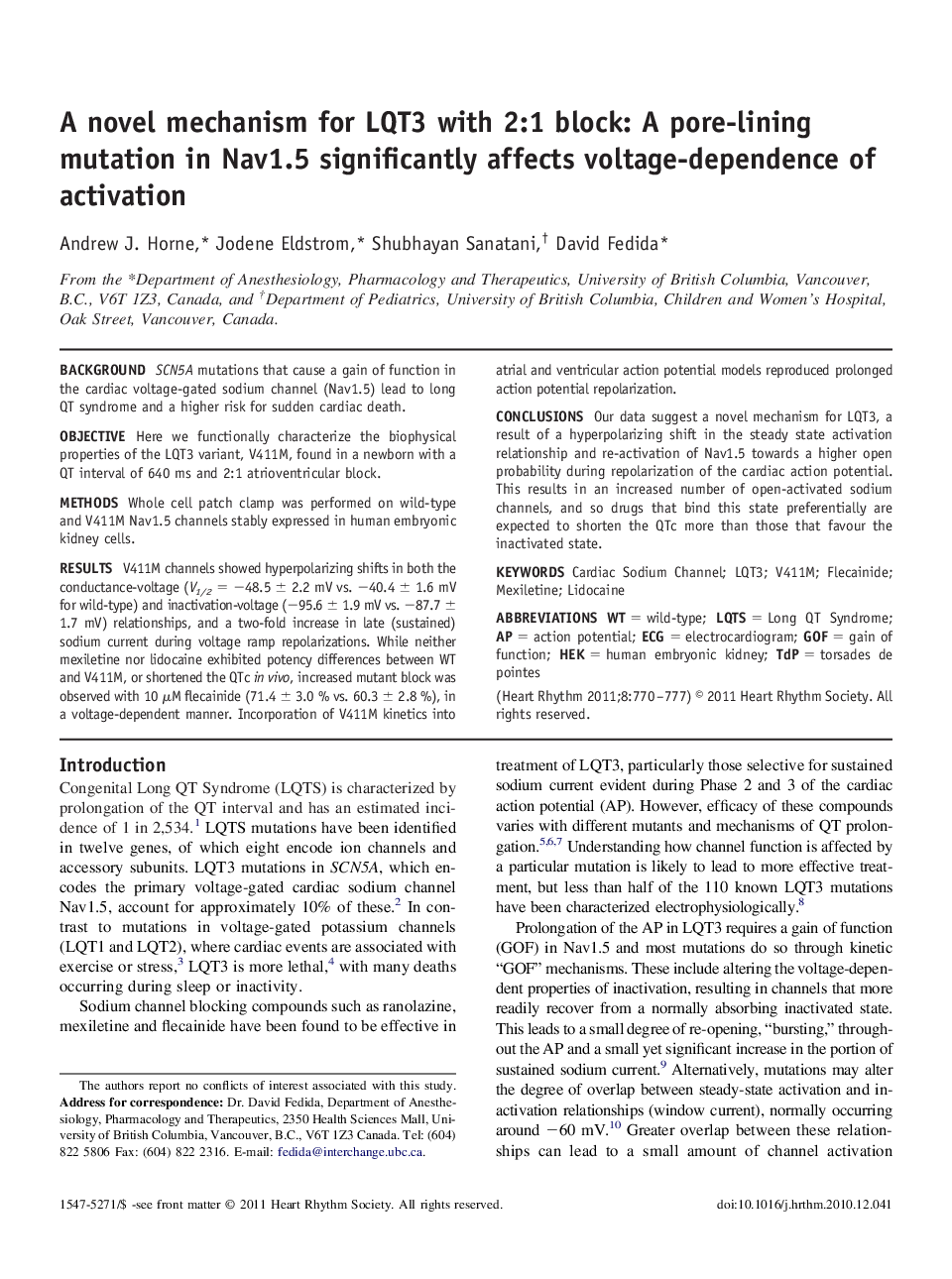| Article ID | Journal | Published Year | Pages | File Type |
|---|---|---|---|---|
| 5961584 | Heart Rhythm | 2011 | 8 Pages |
Abstract
Our data suggest a novel mechanism for LQT3, a result of a hyperpolarizing shift in the steady state activation relationship and re-activation of Nav1.5 towards a higher open probability during repolarization of the cardiac action potential. This results in an increased number of open-activated sodium channels, and so drugs that bind this state preferentially are expected to shorten the QTc more than those that favour the inactivated state.
Keywords
Related Topics
Health Sciences
Medicine and Dentistry
Cardiology and Cardiovascular Medicine
Authors
Andrew J. Horne, Jodene Eldstrom, Shubhayan Sanatani, David Fedida,
